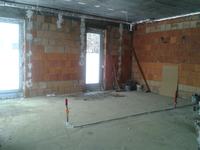So far I managed to get out of running UTP cables in the floor, but this time I have no choice (the devices will be in the center of the room). In addition, there will be underfloor heating. What solution do you propose? I thought about a hard PVC pipe, but it can complicate the heating, while the conduit will be less resistant, although more "configurable" in terms of its track. The second thing - it makes sense to use a tube or conduit (apart from protection against physical damage in time before the screed), since the concrete will get there anyway through the ends (you can possibly protect with foam, but the part outside the tube will be flooded anyway). The only plus I can see is the protection against stretching / shrinking of the cable, which will not have direct contact with the concrete, but the matter of short sections from the end of the tube to the top of the floor remains.



